🍂🍁🎃🍁🍂🌄
🍂🍁🎃🍁🍂🌄







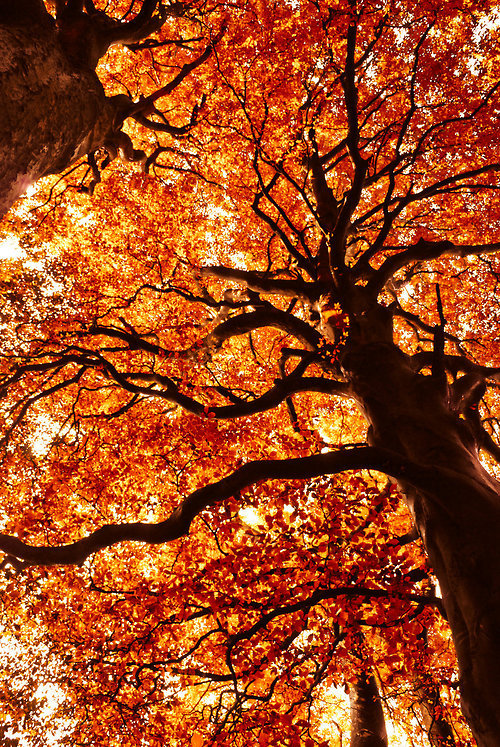


Autumn Colours
↳ Orange
More Posts from Monstrous-mind and Others
🔭🪐🌌🌘☄️

2024 June 23
The Colors of Saturn from Cassini Image Credit: NASA, ESA, JPL, ISS, Cassini Imaging Team; Processing & License: Judy Schmidt
Explanation: What creates Saturn’s colors? The featured picture of Saturn only slightly exaggerates what a human would see if hovering close to the giant ringed world. The image was taken in 2005 by the robot Cassini spacecraft that orbited Saturn from 2004 to 2017. Here Saturn’s majestic rings appear directly only as a curved line, appearing brown, in part from its infrared glow. The rings best show their complex structure in the dark shadows they create across the upper part of the planet. The northern hemisphere of Saturn can appear partly blue for the same reason that Earth’s skies can appear blue – molecules in the cloudless portions of both planet’s atmospheres are better at scattering blue light than red. When looking deep into Saturn’s clouds, however, the natural gold hue of Saturn’s clouds becomes dominant. It is not known why southern Saturn does not show the same blue hue – one hypothesis holds that clouds are higher there. It is also not known why some of Saturn’s clouds are colored gold.
∞ Source: apod.nasa.gov/apod/ap240623.html

Emily Thomas
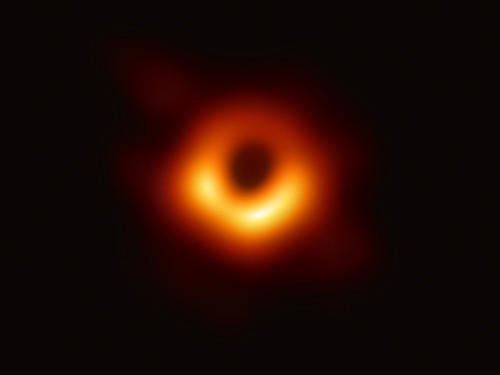
Astronomers Capture First Image of a Black Hole!
Scientists have obtained the first image of a black hole, using Event Horizon Telescope observations of the center of the galaxy M87. The image shows a bright ring formed as light bends in the intense gravity around a black hole that is 6.5 billion times more massive than the Sun. This long-sought image provides the strongest evidence to date for the existence of supermassive black holes and opens a new window onto the study of black holes, their event horizons, and gravity. Credit: Event Horizon Telescope Collaboration (read more).

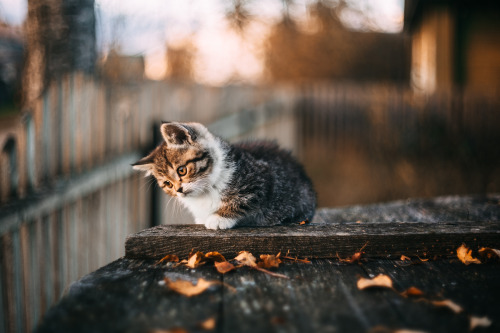
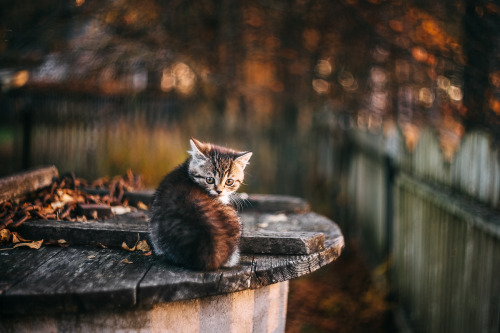
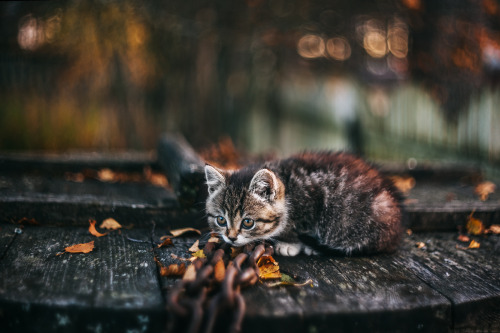
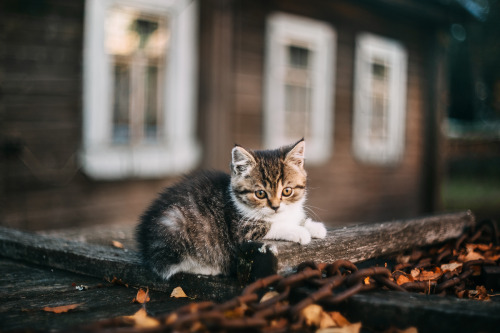
Autumn Kitty by Афиногенова Татьяна
🍂🍁🎃🍁🍂

What could ginger be thinking about?

🔭🌃🌌🛰
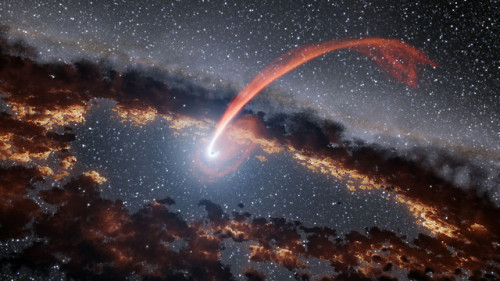
Astronomers Detect Matter Falling into Black Hole
University of Leicester’s Professor Ken Pounds and co-authors report the detection of matter falling into a black hole at 30% of the speed of light.

It is now well established that a supermassive black hole lies in the center of most galaxies, and further that it accretes matter through a disk.
With sufficient matter (interstellar gas clouds or even isolated stars) falling into the black hole, these can become extremely luminous, and are seen as a quasar or active galactic nucleus (AGN).

The orbit of matter around the black hole is often assumed to be aligned with the rotation of the black hole, but there is no compelling reason for this to be the case. In fact, the reason we have summer and winter is that the Earth’s daily rotation does not line up with its yearly orbit around the Sun.
Until now it has been unclear how misaligned rotation might affect the in-fall of matter. This is particularly relevant to the feeding of supermassive black holes since matter can fall in from any direction.

Using data from ESA’s XMM-Newton X-ray Observatory, Professor Pounds and colleagues looked at X-ray spectra from PG1211+143, a Seyfert galaxy (characterized by a very bright AGN resulting from the presence of the massive black hole at its nucleus) located in the constellation Coma Berenices, about one billion light-years away.

The team found the spectra to be strongly red-shifted, showing the observed matter to be falling into PG1211+143’s black hole at the enormous speed of 30% of the speed of light, or around 62,000 miles per second (100,000 km per second).
The gas has almost no rotation around the black hole, and is detected extremely close to it in astronomical terms, at a distance of only 20 times the black hole’s size (its event horizon, the boundary of the region where escape is no longer possible).
“The galaxy we were observing with XMM-Newton has a 40-million-solar-mass black hole which is very bright and evidently well fed,” Professor Pounds said.

“Indeed some 15 years ago we detected a powerful wind indicating the black hole was being over-fed. While such winds are now found in many active galaxies, PG1211+143 has now yielded another ‘first,’ with the detection of matter plunging directly into the black hole itself.”
“We were able to follow an Earth-sized clump of matter for about a day, as it was pulled towards the black hole, accelerating to a third of the velocity of light before being swallowed up by the hole.” source
🎃🍂🍁🌌☕
Halloween cat
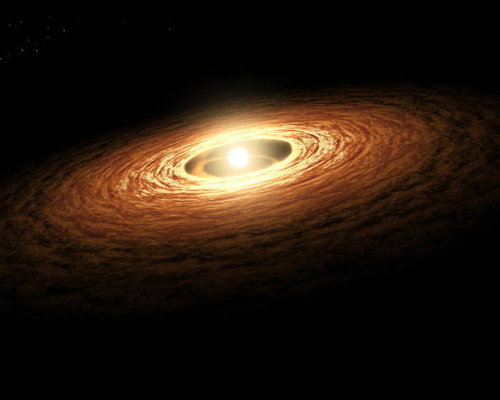
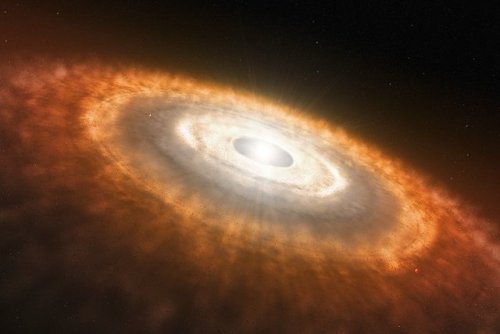
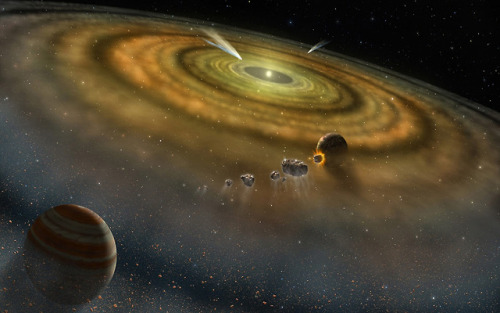
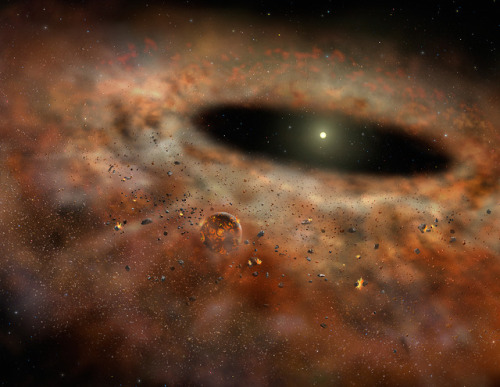
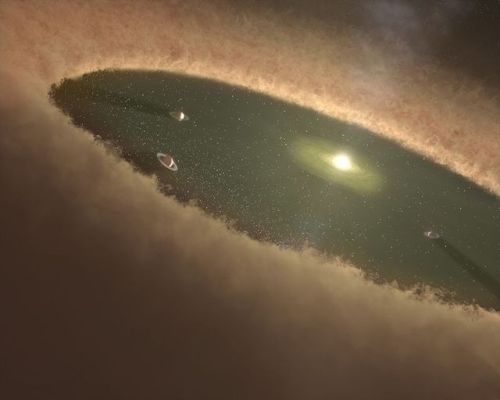
A protoplanetary disk is a rotating circumstellar disk of dense gas and dust surrounding a young newly formed star, a T Tauri star, or Herbig Ae/Be star. The protoplanetary disk may also be considered an accretion disk for the star itself, because gases or other material may be falling from the inner edge of the disk onto the surface of the star. This process should not be confused with the accretion process thought to build up the planets themselves. Externally illuminated photo-evaporating protoplanetary disks are called proplyds.
The nebular hypothesis of solar system formation describes how protoplanetary disks are thought to evolve into planetary systems. Electrostatic and gravitational interactions may cause the dust and ice grains in the disk to accrete into planetesimals. This process competes against the stellar wind, which drives the gas out of the system, and gravity (accretion), which pulls material into the central T Tauri star.
source
Image credit: NASA/JPL, ESO
-
 lilbeaniebro liked this · 1 month ago
lilbeaniebro liked this · 1 month ago -
 llemongrassandsleep liked this · 1 month ago
llemongrassandsleep liked this · 1 month ago -
 00lunect liked this · 1 month ago
00lunect liked this · 1 month ago -
 angryherobiscuitknight-blog liked this · 1 month ago
angryherobiscuitknight-blog liked this · 1 month ago -
 eclipssnstars liked this · 1 month ago
eclipssnstars liked this · 1 month ago -
 trinikins reblogged this · 1 month ago
trinikins reblogged this · 1 month ago -
 trinikins liked this · 1 month ago
trinikins liked this · 1 month ago -
 ima2008girl liked this · 1 month ago
ima2008girl liked this · 1 month ago -
 milkteawithbobaa liked this · 1 month ago
milkteawithbobaa liked this · 1 month ago -
 somboreking770 liked this · 1 month ago
somboreking770 liked this · 1 month ago -
 darkpatroldragon liked this · 1 month ago
darkpatroldragon liked this · 1 month ago -
 funktrolls reblogged this · 1 month ago
funktrolls reblogged this · 1 month ago -
 funktrolls liked this · 1 month ago
funktrolls liked this · 1 month ago -
 ckneal liked this · 1 month ago
ckneal liked this · 1 month ago -
 needy-is-so-herss liked this · 2 months ago
needy-is-so-herss liked this · 2 months ago -
 butterscotcheye reblogged this · 6 months ago
butterscotcheye reblogged this · 6 months ago -
 morningtears reblogged this · 7 months ago
morningtears reblogged this · 7 months ago -
 morningtears liked this · 7 months ago
morningtears liked this · 7 months ago -
 divinediva reblogged this · 7 months ago
divinediva reblogged this · 7 months ago -
 erialbert2023 reblogged this · 7 months ago
erialbert2023 reblogged this · 7 months ago -
 erialbert2023 liked this · 7 months ago
erialbert2023 liked this · 7 months ago -
 cozylush1 liked this · 7 months ago
cozylush1 liked this · 7 months ago -
 butterscotcheye reblogged this · 7 months ago
butterscotcheye reblogged this · 7 months ago -
 cylon-angel reblogged this · 7 months ago
cylon-angel reblogged this · 7 months ago -
 allium-florist liked this · 7 months ago
allium-florist liked this · 7 months ago -
 sunkissedfawn liked this · 8 months ago
sunkissedfawn liked this · 8 months ago -
 keriv93 liked this · 8 months ago
keriv93 liked this · 8 months ago -
 thornecrest liked this · 8 months ago
thornecrest liked this · 8 months ago -
 antojane reblogged this · 8 months ago
antojane reblogged this · 8 months ago -
 billsbeautifulnightmare liked this · 9 months ago
billsbeautifulnightmare liked this · 9 months ago -
 memebae1719 liked this · 11 months ago
memebae1719 liked this · 11 months ago -
 onomatopoeiaa liked this · 1 year ago
onomatopoeiaa liked this · 1 year ago -
 tinyspookyhorror reblogged this · 1 year ago
tinyspookyhorror reblogged this · 1 year ago -
 kantarotactics reblogged this · 1 year ago
kantarotactics reblogged this · 1 year ago -
 dessiibooo liked this · 1 year ago
dessiibooo liked this · 1 year ago -
 normalisboring-42 liked this · 1 year ago
normalisboring-42 liked this · 1 year ago -
 cromwellwitch reblogged this · 1 year ago
cromwellwitch reblogged this · 1 year ago -
 dieblauenfruehlingsaugen reblogged this · 1 year ago
dieblauenfruehlingsaugen reblogged this · 1 year ago -
 undeadink131 liked this · 1 year ago
undeadink131 liked this · 1 year ago -
 nostalgiashellbound liked this · 1 year ago
nostalgiashellbound liked this · 1 year ago -
 mayouch reblogged this · 1 year ago
mayouch reblogged this · 1 year ago -
 daddy0cass reblogged this · 1 year ago
daddy0cass reblogged this · 1 year ago -
 hallowickit reblogged this · 1 year ago
hallowickit reblogged this · 1 year ago -
 somethinginthewoods reblogged this · 1 year ago
somethinginthewoods reblogged this · 1 year ago -
 justjadesworld liked this · 1 year ago
justjadesworld liked this · 1 year ago
My ambition is handicapped by laziness. -C. Bukowski Me gustan las personas desesperadas con mentes rotas y destinos rotos. Están llenos de sorpresas y explosiones. -C. Bukowski. I love cats. Born in the early 80's, raised in the 90's. I like Nature, Autumn, books, landscapes, cold days, cloudy Windy days, space, Science, Paleontology, Biology, Astronomy, History, Social Sciences, Drawing, spending the night watching at the stars, Rick & Morty. I'm a lazy ass.
222 posts
